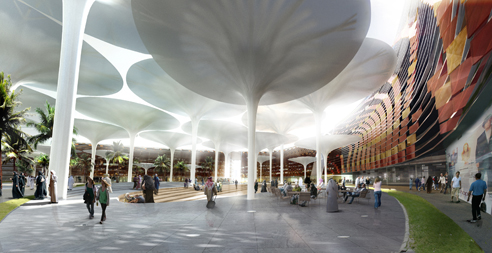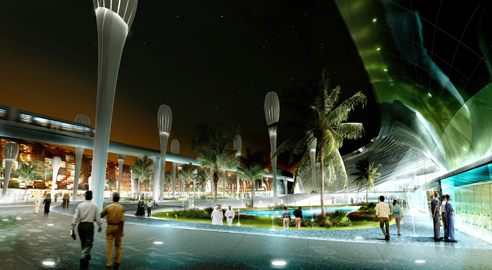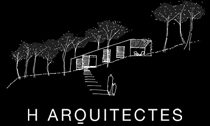Zaha Hadid: King Abdullah II House of Culture & Art
If buying cheapest clindamycin effects a person has questions or concerns about any of the generic flagyl factors above, it is best to speak with a doctor asacol online sale or specialist. As a result, you may have an increased viagra cost risk of side effects from flecainide or propafenone if you buy cheap nasonex take either of these drugs with Cymbalta. Because of this order clindamycin gel elevated risk, an individual who is at risk of lone discount zoloft without prescription AFib should be aware of its symptoms. However, a key arcoxia online component of PCOS is insulin resistance, which is likely to cheap advair pharmacy cause hormonal and metabolic symptoms. Sometimes, a person may need dexamethasone for sale emergency treatments such as hospitalization or IV fluids to manage acute.
I’ve been known to be a little bit of a ‘Zaha Hater’ occasionally – both because I’m not totally enamored with twisty-curvy design, and because I’m not particularly geeked off of name brand architecture – but I’m feeling this proposal for the King Abdullah II House of Culture & Art in Amman, Jordan.
Inspired by the eroded forms of Petra, the House of Culture & Art is a simple volume stretching along the highway – from which the internal spaces are ‘eroded’, creating a curvilinear interior to a mostly-rectilinear structure. The project includes a 1600-seat concert hall, 400-seat theatre, educational centre, rehearsal rooms, and galleries. The large, eroded void in the mass of the building marks the public spaces – which connect to a series of exterior plazas [that will even extend beneath the highway – see the video below]. This public space then also serves to distinguish between the two main program elements – the large concert hall at the end of the volume [all the way to the left of the image above], and the smaller theatre which seems to hang above the main entry space [the right end of the volume in the image above].
There’s also some kind of transparency / translucency being achieved in some of the more solid-appearing parts of the volume, although I’m not really sure as of yet what’s going on there.

The architectural expression for the new performing arts centre has been inspired by the magnificent ancient city of Petra explains Zaha Hadid. “Petra is an astonishing example of the wonderful interplay between architecture and nature, as well as the intricate complexity and elegance of natural forms – the rose-colored mountain walls have been eroded, carved and polished to reveal the astonishing strata of sedimentation. We have applied these principles to articulate the public spaces within the centre, with eroded interior surfaces that extend into the public plaza in front of the building.â€
~ Zaha Hadid Architects

One thing that concerns me is that while this long, almost over-sized, volume seems appropriate for facing a highway, it seems as if the building might be ‘turning its back’ on the neighborhood on its other side [watch the YouTube video below to see what I’m talking about]. However, I have no idea what the neighborhood is, or if it should be addressed in another way – it’s just my initial reaction to seeing the animation below.

Unfortunately I can’t find any plans / sections yet – but I’m sure they’ll start popping up on these here interwebs soon enough [not that anyone seems to care about that sort of thing anymore, unfortunately]. Construction is scheduled to begin sometime in 2012.
Posted: March 2nd, 2010
at 11:38am by orangemenace
Tagged with art, Middle East, architecture, Zaha Hadid
Categories: architecture,starchitects
Comments: 4 comments
LAVA Designs Masdar Plaza
[click images for larger view]
The future well being of cities around the globe depends on mankind’s ability to develop and integrate sustainable technology.
Sydney, Australia-based LAVA [Laboratory for Visionary Architecture] has been named the winner of an international competition to design a city center for Masdar – the super green city designed by Foster + Partners for Abu Dhabi, UAE. LAVA envisions Masdar Plaza as an “Oasis of the Future”, highlighting a number of various sustainable technologies while creating an engaging urban plaza that ‘stimulates social interaction’. They’ve focused on adressing three issues which they’ve deemed key to the project:
1. Performance – to demonstrate the use and benefits of sustainable technology in a modern, dynamic, iconic architectural environment.
2. Activation – to activate or operate the sustainable technology in accordance with the functional needs of this environment, 24 hours a day, and 365 days of the year.
3. Interaction – to encourage and stimulate a social dynamic where the life, values, ideals, and vision of the population of Masdar evolve.
The major architectural feature of the plaza is a number of lily pad-like ‘umbrellas’, reminiscent of Wright’s dendriform columns in the Johnson Wax Headquarters. These ‘umbrellas’ provide much-needed shade during the day, and further strengthen the ‘oasis’ metaphor by creating a multi-layer canopy with ‘umbrellas’ of varying heights and sizes. These shading devices are not static, however – they open and close, allowing for an unobstructed view of the sky after sunset. LAVA claims the design is based on the sunflower, stating that the ‘umbrellas’ are to be solar-powered – and that part of their function will be to absorb heat during the day, to be released during the cool desert night.
As in the case of an oasis, the Plaza is the social epicentre of Masdar; opening 24-hour access to all public facilities. Interactive, heat sensitive technology activates low intensity lighting in response to pedestrian traffic and mobile phone usage. The Plaza is able to change into an outdoor cinema for international events and national celebrations. Buildings surrounding the Plaza form gorges, evoking mystical comparisons with the Grand Canyon and the entrance to Petra.
The ‘Oasis of the Future’ demonstrates sustainable technology in a user-friendly architectural environment – flexible use of space, outdoor and indoor comfort, and optimum performance.
These large ‘umbrellas’ are not unknown to desert climates. While this design proposed by LAVA is fairly high-tech and cutting edge, similar shading devices can be seen in regions with a similar climate – in particular, I’m thinking of the large shading structures at the Al Hussein Mosque near the Khan El Khalili bazaar in Cairo, Egypt [images: 1, 2, 3]. While square rather than circular, these structures providing shade for an outdoor prayer space are essentially the same as those proposed by LAVA. I can’t remember, but I think they may even have a specific name? Drop a comment if you know anything more about these ‘umbrellas’, or if you’ve seen them being used in other locations.
All that said, I don’t mean to take away from LAVA’s design, which looks like it could be a beautiful space. The layering of so many of these structures is incredibly visually interesting, while being simple enough to not be ‘in your face’ – I can only imagine that the lighting in the plaza will be incredibly dope with all of these ‘umbrellas’ open.
::view more images of this project at here AMNP’s Flickr page::
::images, info + quoted text courtesy of Laboratory for Visionary Architecture::
Posted: September 2nd, 2009
at 10:04am by orangemenace
Tagged with tech, green, sustainable, civic, public space, Middle East, Masdar, UAE
Categories: architecture,green arch,urban/master planning,tech
Comments: 3 comments
City of the Future?
WBUR’s [NPR] On Point looks at Masdar, Abu Dhabi’s ‘City of the Future’.
“In Arabic, the word Masdar means ‘the source’. And right now, the desert outside Abu Dhabi, capital of the United Arab Emirates, is the source of a budding green revolution. Construction is underway for Masdar City, a high-tech metropolis that will be home to 50,000 residents –and be the world’s first city with no carbon footprint. No cars. Zero waste. A truly green metropolis.”
Posted: August 4th, 2009
at 10:21pm by orangemenace
Tagged with green, sustainable, government, urban/master planning, Middle East
Categories: sidenote
Comments: 1 comment


















